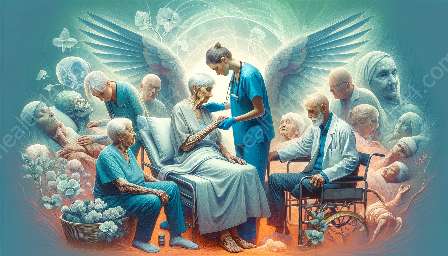As a critical component of geriatric nursing and geriatrics, the identification and reporting of elder abuse in healthcare settings are essential to the well-being of elderly individuals. This topic cluster delves into how elder abuse is recognized and reported, highlighting the signs, protocols, and resources involved.
Understanding Elder Abuse
Elder abuse encompasses various forms of mistreatment, including physical, emotional, sexual, and financial abuse, as well as neglect. As individuals age, they may become more vulnerable to exploitation, making it vital for healthcare providers to be equipped with the knowledge and skills to identify and address abuse.
Recognizing Signs of Elder Abuse
Identifying elder abuse often involves observing physical, behavioral, and environmental indicators. Physical signs such as unexplained injuries, bruising, or malnutrition may raise suspicions. Changes in behavior, such as withdrawal or fearfulness, can also signal potential abuse. Additionally, environmental factors such as unsanitary living conditions or inadequate access to necessities may point to neglect. It is crucial for healthcare professionals to remain vigilant and compassionate when observing these signs.
Reporting Protocols
Healthcare facilities typically have established protocols for reporting suspected elder abuse. These protocols often involve documenting observed signs, communicating concerns with colleagues, and initiating the appropriate reporting processes. Depending on the severity and immediacy of the situation, healthcare providers may need to involve law enforcement or adult protective services to ensure the safety and well-being of the elderly individual.
Resources for Addressing Elder Abuse
Geriatric nursing and geriatrics rely on various resources to address elder abuse effectively. These resources can include educational materials for staff training, support services for individuals who have experienced abuse, and interdisciplinary collaborations to provide holistic care for elderly individuals at risk of or experiencing abuse.
Ethical and Legal Considerations
When navigating the identification and reporting of elder abuse, healthcare professionals must adhere to ethical and legal considerations. They must prioritize the autonomy and dignity of the elderly individual while fulfilling their duty to protect and advocate for their well-being. Understanding the legal obligations and ethical responsibilities is crucial for handling suspected cases of elder abuse responsibly and effectively.
Challenges and Advancements in Elder Abuse Detection
Despite the efforts to identify and report elder abuse, there are challenges that healthcare professionals encounter. These challenges may include reluctance from the elderly individual to disclose abuse, complexities in differentiating between accidental harm and intentional mistreatment, and barriers related to reporting abuse in cases involving family members or caregivers. However, advancements in training, technology, and multidisciplinary approaches continue to enhance the capabilities of healthcare providers in detecting and addressing elder abuse.
Conclusion
The identification and reporting of elder abuse in healthcare settings are integral to the practice of geriatric nursing and geriatrics. By understanding the signs of abuse, following reporting protocols, leveraging relevant resources, and upholding ethical and legal considerations, healthcare professionals can contribute to safeguarding the well-being and safety of elderly individuals. This proactive approach aligns with the commitment to providing comprehensive care and advocacy for aging populations.


